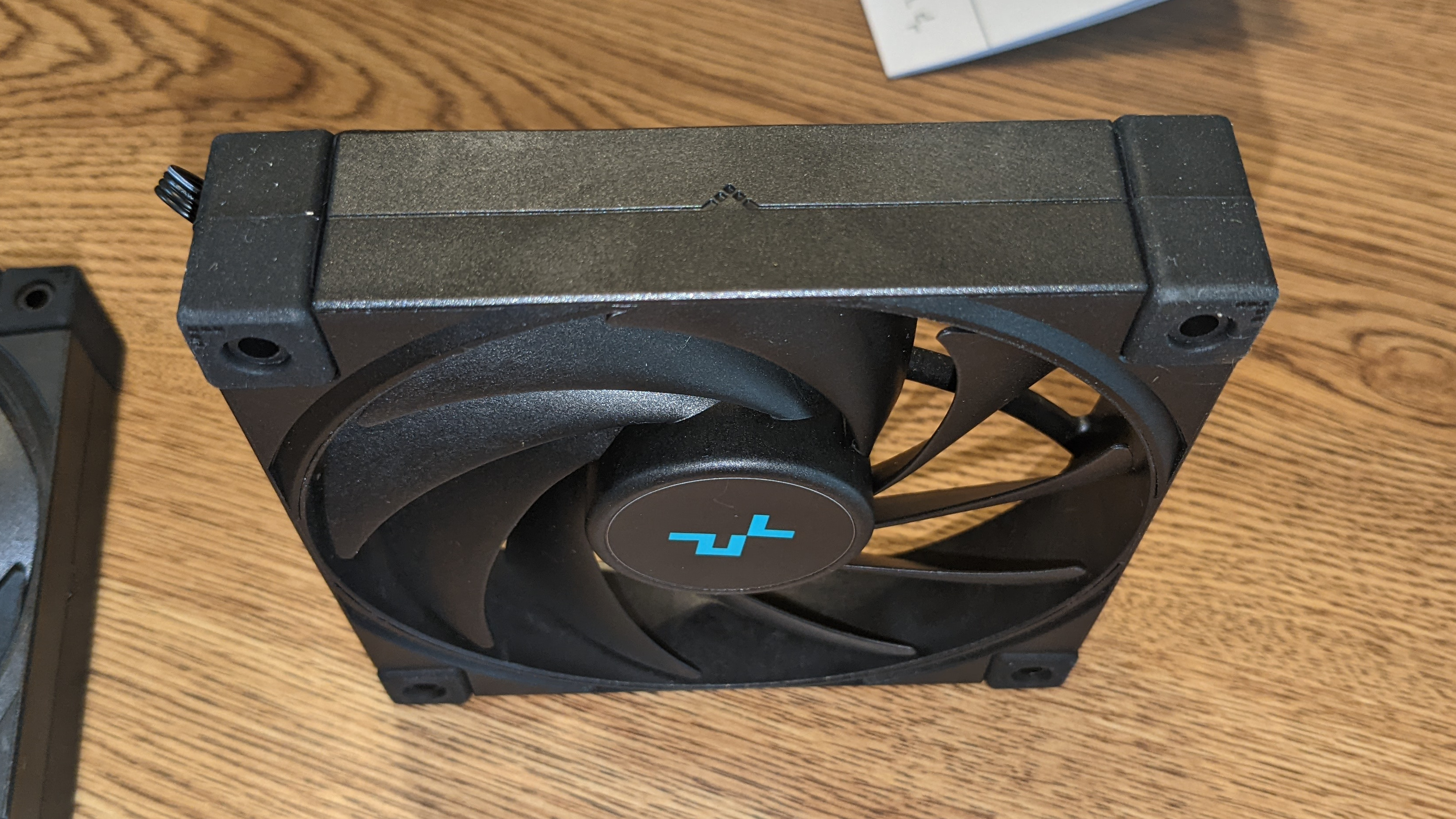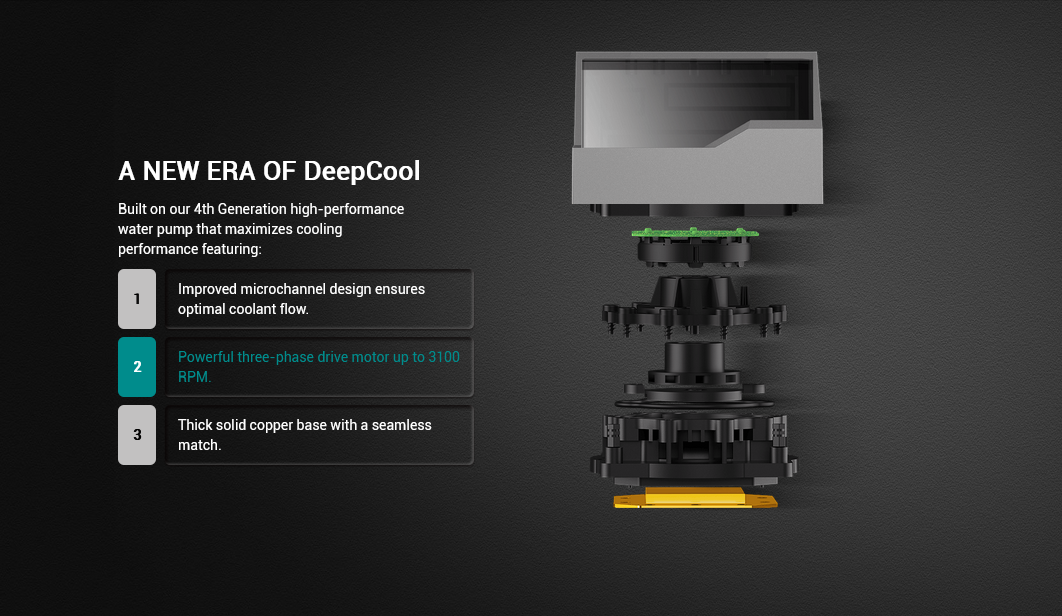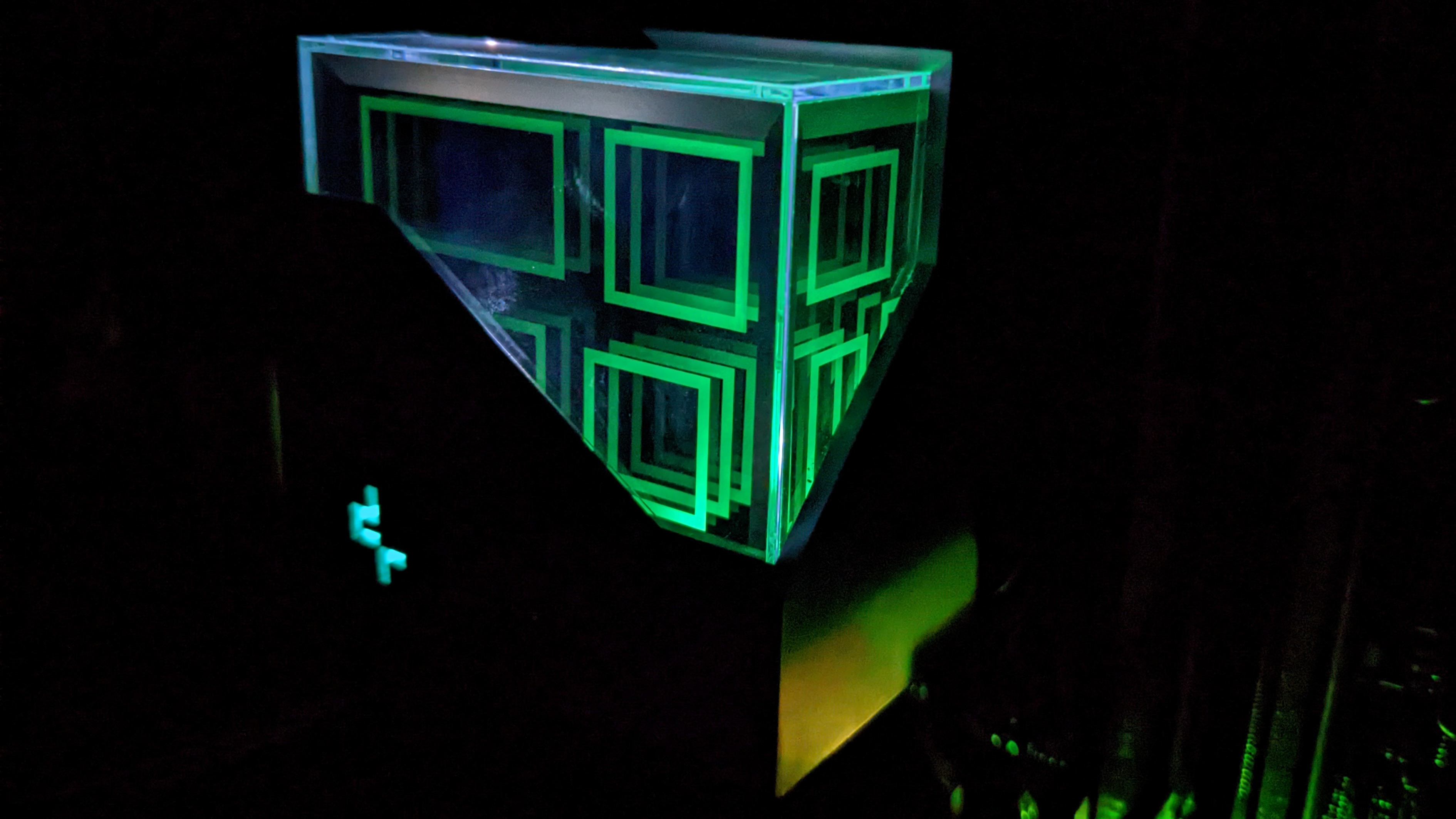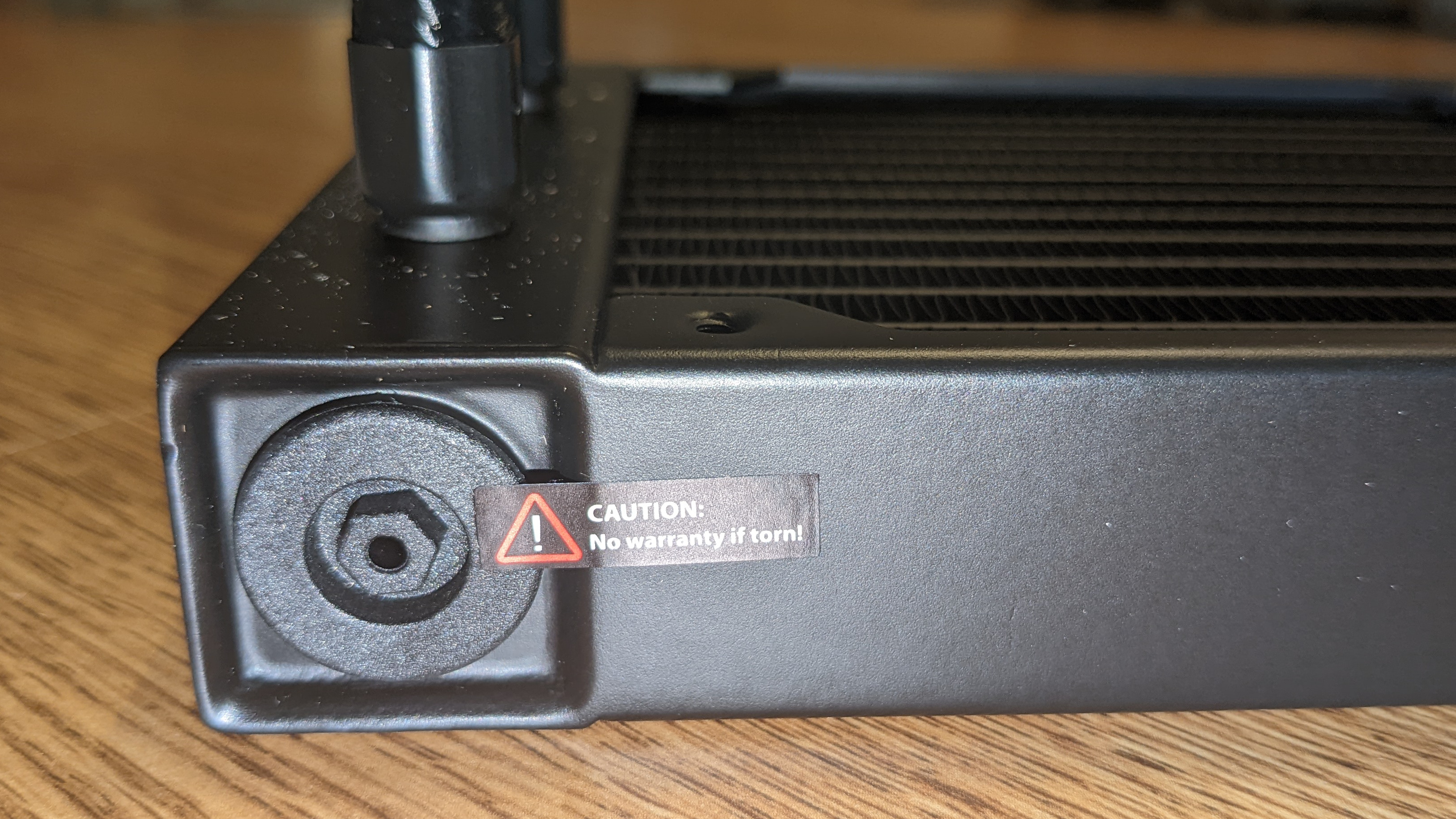Tom's Hardware Verdict
DeepCool’s LT720 provides top-tier cooling performance, handing loads up to about 315W when paired with Intel’s i9-13900K in our test setup. Its improved 4th generation, in-house design pump gives it an edge over other coolers.
Pros
- +
Strongest cooler we’ve tested, in terms of cooling capacity
- +
Handles up to about 315W loads with Intel’s i9-13900K
- +
Won’t get in the way of your tall RAM
Cons
- -
A bit loud at full fan speeds
Why you can trust Tom's Hardware
DeepCool was founded in Beijing in 1996. And the company has, in recent years, delivered some of the best CPU coolers on the market, with options like the Assassin III and AK620. DeepCool’s current lineup includes both air and AIO coolers, as well as computer cases, keyboards, power supplies and other accessories.
We most recently reviewed DeepCool’s budget AG400 cooler, which performed well in our tests. Today we’re going to look at the company’s newest, top-end cooling product, the 360mm LT720 AIO. It features an upgraded pump and new CPU block compared to previous generation DeepCool AIOs. But of course, the latest CPUs from AMD and Intel requiring more capable cooling, we’ll have to put the LT720 through our tests to see how well it handles the Core i9-13900K. But first, here are the LT720’s specifications from DeepCool.
Cooler Specifications
| Cooler | DeepCool LT720, a 360mm AIO |
| MSRP | $139 USD |
| Radiator Dimensions | 402 x 120 x 27 mm |
| Radiator Material | Aluminum |
| Pump Speed | 3100 RPM±10% |
| Net Weight | 1856g |
| Socket Compatibility | Intel: LGA2066/2011-v3/2011/1700/1200/1151/1150/1155 |
| AMD: sTRX4/sTR4/AM5/AM4 | |
| Rated Noise Level | Pump: 19 dBA |
| Fans: Up to 32.9 dBA | |
| Base | Copper |
| Max TDP (Our Testing) | ~315W |
| Warranty | 5 years |
Packing and Included Contents
DeepCool’s LT720 comes in a fairly large box that uses plastic coverings, foam, and cardboard to protect the contents.


Included with the package are the following:
- 360mm Radiator
- CPU block with 4th generation DeepCool water pump
- 3x 120mm fans
- 1x fan splitter
- Mounts for all modern CPU sockets (including AM5 & LGA1700)
- Information, Support, and Installation guides
- Pre-applied thermal paste
Installation
Installing DeepCool’s LT720 was simple. you press the backplate to the motherboard and then slide on the standoffs. Then you’ll need to secure the fans to the radiator and then mount the radiator to the computer case. Once that’s finished, simply press the CPU block to the socket and secure it with the included thumb screws. The last step is to attach the infinity mirror atop the CPU block.
One item of importance to note: While the LT series AIOs will function regardless of the CPU block’s orientation, the company says you should install the LT720 in the “6 O’Clock,” with it’s tubes coming from the bottom of the CPU block, for the best performance.




Features of DeepCool’s LT720
4th generation in-house CPU pump
The vast majority of Liquid Coolers on the market today are based around Asetek designs, but DeepCool’s LT720 includes a 4th generation in-house designed water pump. It features new flow channels with an optimized skived copper block, paired with a powerful 3100RPM three-phase drive pump motor for strong thermal performance.
Get Tom's Hardware's best news and in-depth reviews, straight to your inbox.
Full Copper CPU plate
The CPU contact plate on DeepCool’s LT720 is made of copper and comes with thermal paste pre-installed.
Infinity Mirror
On top of the water pump is an ARGB infinity mirror, which gives the LT720’s CPU block a very unique-looking piece of eye candy.
User serviceable loop
If you ever want to manually refill the LT720, it’s possible to do so on your own. Doing so may void the warranty, but in all likelihood, the warranty is going to be expired by the time you would need to refill the loop.
Medium thickness 360mm radiator
The LT720 features a 360mm with 27mm thickness. This isn’t the thickest (or thinnest) radiator we’ve seen, but it should be compatible with most cases that have space for three 120mm fans.


3x custom DeepCool FK120 fans
There’s more to a cooler than just the heatsink or radiator. The bundled fans have a significant impact on cooling and noise levels. Included with the LT720 are 3x custom FK120 fans. The FK series is DeepCool’s line of high-performance 120mm PWM fans designed for top-tier cooling performance. But the fans included are not the same as retail FK120 fans -- these updated FK120 fans feature upgraded speeds, more airflow, and higher static pressure.
The company says high-quality polybutylene terephthalate (PBT) material is used in the production of the FK series fans to ensure increased durability and wear resistance, allowing the blades to maintain higher tensile strength. Shock-absorbing rubber pads protect the screw mounts to reduce vibrations and noise.


One feature that will be especially handy for those new to building PCs is that on each of DeepCool’s FK fans there are arrow indicators showing both the direction the fans spin and the direction of the airflow - eliminating a question that plagues many new users: Did I install the fan in the right direction?
| Model | Custom DeepCool FK120 |
| Dimensions | 120 x 120 x 25 mm |
| Fan Speed | 500-2250 RPM±10% |
| Air Flow | Up to 85.85 CFM |
| Air Pressure | 3.27 mmAq |
| Noise Level | Up to 32.9 dBA |
| Bearing Type | Fluid Dynamic Bearing |
| Lighting | None |
Testing Methodology
While it was fairly easy with previous generations of CPUs for coolers to keep the flagship i9 processor well under TJ max (the maximum temperature a CPU can sustain without throttling) in tough workloads, this is no longer realistically possible on current generation CPUs (and the 13900K especially) without extreme cooling (or enabling power limits).
While in the past a CPU hitting its peak temperature was cause for concern, enthusiasts are going to have to learn to accept high temperatures as “normal” while running demanding workloads with Raptor Lake and Ryzen 7000 CPUs. Modern AMD & Intel CPUs are designed to run fairly hot without any problems – up to 95 degrees C for AMD Ryzen 7000 CPUs, and up to 100 degrees C for Intel’s Core i9-13900K. Similar behavior has been standard in laptops for years due to cooling limitations in tight spaces.
Furthermore, Intel’s i9-13900K supports Adaptive Boost Technology (ABT) which allows Core i9 processors to dynamically boost to higher all-core frequencies based on available thermal headroom and electrical conditions. This allows multi-core loads to operate at up to 5.5ghz if the necessary amount of thermal dissipation is there. This feature works in a way that actively seeks high temperatures: If the chip sees that it is running underneath the 100-degree C threshold, it will increase its performance and power consumption until it reaches the safe 100C limit, thus sustaining higher clocks (and providing better performance) for longer periods.
The increased cooling challenges posed by Raptor Lake mean that we’ve had to change some of the ways we test coolers. Some coolers were able to pass Cinebench R23 multicore testing with Intel’s 12th Gen i9-12900K when power limits were removed (although only the strongest models were able to pass that test). Most liquid coolers and all air coolers I’ve tested “failed” that test because the CPU reached TJ max in this scenario.
With Raptor Lake’s 13900K, not a single cooler tested has been able to keep the CPU under TJ max in this test – because as we pointed out, the chip is designed to dial up performance and power until it richest that thermal result. We’ll compare performance instead by looking at total benchmark scores and clock speeds maintained.
I’ll be testing Intel’s i9-13900K CPU using Asus’ TUF Gaming Z690 Gaming Plus WIFI motherboard and Cooler Master’s HAF 700 Berserker computer case, with case fans limited to 35% speeds. The motherboard’s default fan curve is used for the CPU Cooler’s fans.
In addition to testing Cinebench without power limits enforced, we’ll also be showing results when the CPU’s power consumption is limited to a more reasonable 200W. We’ll also show results at 125W for those who prefer whisper-quiet cooling, at the cost of some performance. For both of these results, we’ll show traditional delta over ambient temperature results.
We’ll provide noise level measurements recorded using a PSPL25 Sound Meter for all three power levels tested, to compare how much noise each cooler makes in different scenarios. We expect most coolers to run effectively silently at 125W.
LGA1700 Socket Bending
Note there are many factors other than the CPU cooler that can influence your cooling performance, including the case you use and the fans installed in it. A system's motherboard can also influence this, especially if it suffers from bending, which results in poor cooler contact with the CPU.
In order to prevent bending from impacting our cooling results, we’ve installed Thermalright’s LGA 1700 contact frame into our testing rig. If your motherboard is affected by bending, your thermal results will be worse than those shown below. Not all motherboards are affected equally by this issue. I tested Raptor Lake CPUs in two motherboards. And while one of them showed significant thermal improvements after installing Thermalright’s LGA1700 contact frame, the other motherboard showed no difference in temperatures whatsoever! Check out our review of this contact frame for more information.
Testing Configuration
| CPU | Intel i9-13900K |
| Comparison Air Coolers Tested | DeepCool AG400 |
| DeepCool AG620 | |
| Iceberg Thermal IceSLEET G6 Stealth | |
| Thermalright Assassin X 120 R SE | |
| Thermalright AXP120-X67 | |
| Comparison AIO Coolers Tested | Arctic Liquid Freezer II 360 |
| Fractal Celsius+ S36 Prisma | |
| Motherboard | Asus TUF Gaming Z690 Plus Wifi DDR5 |
| RAM | Crucial DDR5-4800 |
| GPU | Intel ARC A770 LE |
| Case | Cooler Master HAF 700 Berserker |
| PSU | Cooler Master XG Plus 850 Platinum PSU |
- MORE: How to Buy the Right CPU Cooler
- MORE: How to Overclock a CPU
- MORE: How to Check CPU Temperature
- MORE: All CPU Cooling Content

Albert Thomas is a contributor for Tom’s Hardware, primarily covering CPU cooling reviews.
-
RichardtST That. Looks. Cool. I would almost consider buying Intel for my next build just to get one.... :)Reply -
thisisaname ReplyRichardtST said:That. Looks. Cool. I would almost consider buying Intel for my next build just to get one.... :)
It is also compatible with AMD so you do not have to buy Intel to use it :geek: -
Co BIY Why build the chips when the accessories are almost as expensive and probably cheaper to make ?Reply
Intel (and AMD) is leaving a lot of money on the table not bundling their own cooler. -
watzupken I actually feel that when testing this cooler, the stock mounting mechanism should have been used to demonstrate the out of box results.Reply -
helper800 The arctic freezer AIO looks like an overall winner for noise, performance, and temps at lower wattage draw. Its also significantly cheaper.Reply -
Eliad Buchnik It still can't beat the king (Arctic liquid freezer ii) when it comes to performance /noise ratio. I think you should do noise normalized testing at several noise levels to show which cooler is more effective and not brute-forcing its way to the top of the chart.Reply -
ReveurGAM Andrew, why do you insist on comparing cooler to those that are generally known to be weaker? You pulled the same rug over people's eyes with the PA120 SE. Stop making products look better than they are to the average consumer.Reply -
PC_Tweaker What a great article Andrew Thomas! I was leaning towards this purchase after my own research. Your detailed review pushed me over the edge as I replace my twice deceased ThermalTake TH240. That clunker is no friend to my i9 - I am eager to see how much better it works.Reply
I registered on this forum just so I could thank you for excellent article. -
postpro Got one on sale for my first PC build and I’m very happy with it. Quick and easy install on an i9-13900k with a Thermalright contact frame and haven’t heard the fans once, although I’ve only been gaming so far and haven’t pushed the CPU much for big renders and such.Reply
Also works with OpenRGB, though I’m guessing that’s because OpenRGB gets along with my mobo.
Thanks for the review, it helped me decide!









